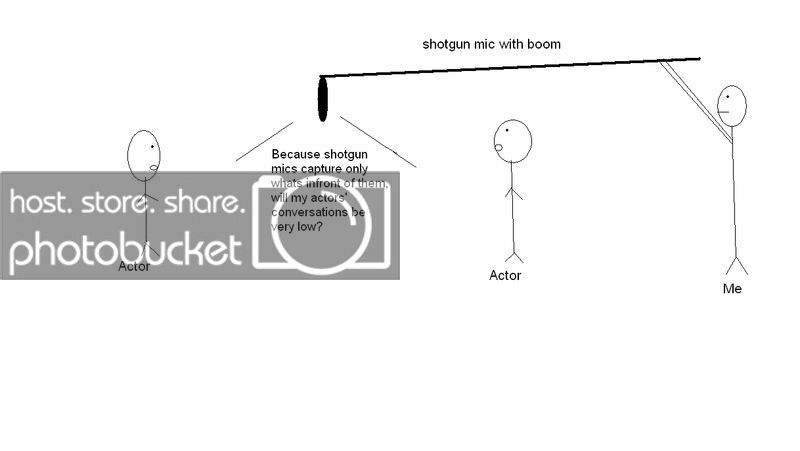1.I purchased the Rhode NTG-2 some time back and I wanted to get your guys' opinion on something.
So far my subjects (actors) have been relatively close, allowing me to pick up good sound. I'm starting to feel that shotgun mics are made to cater to individuals. For example news reporters. And not for short films.
In the near future, if there is a conversation between 2 people sitting/standing across from one another, will I get the same consistent sound as appose to non shot-gun mics?
2. Another quick question I have. Should I put my XH-A1 volume to high when picking up sound? or Should I just leave it at medium?
Here is a drawing if you don't understand. Thanks in advance

So far my subjects (actors) have been relatively close, allowing me to pick up good sound. I'm starting to feel that shotgun mics are made to cater to individuals. For example news reporters. And not for short films.
In the near future, if there is a conversation between 2 people sitting/standing across from one another, will I get the same consistent sound as appose to non shot-gun mics?
2. Another quick question I have. Should I put my XH-A1 volume to high when picking up sound? or Should I just leave it at medium?
Here is a drawing if you don't understand. Thanks in advance

Last edited:

